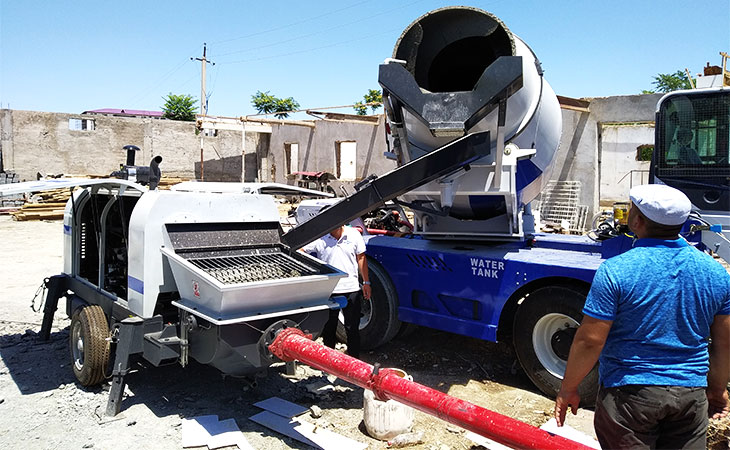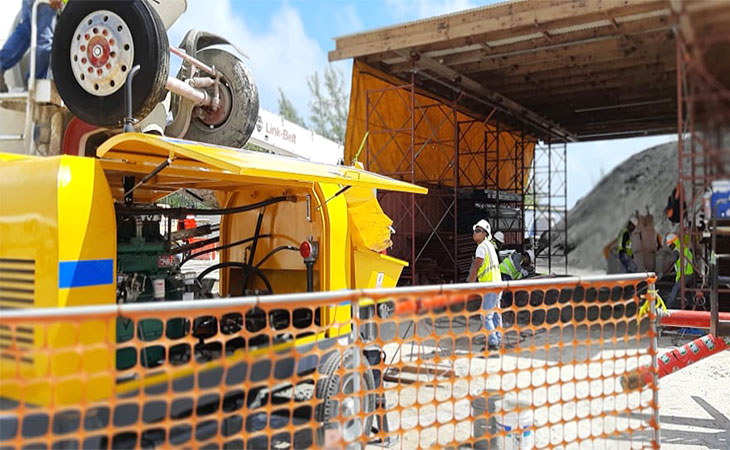The construction industry is dynamic, with equipment prices often influenced by various factors such as demand, technological advancements, and global economic conditions. In 2024, the concrete pump market is experiencing shifts in pricing dynamics driven by a combination of industry-specific and broader economic factors.
Global Economic Conditions
The global economic landscape plays a significant role in determining the harga pompa beton, including concrete pumps. Economic growth or downturns, inflation rates, and currency fluctuations can impact manufacturing costs, affecting the pricing of concrete pumps. A robust global economy typically leads to increased construction activity, driving demand for concrete pumps and influencing their prices.

Technological Advancements
Ongoing technological advancements in the construction industry contribute to the evolution of concrete pump technology. Innovations in pompa beton design, automation, and efficiency can influence prices. While newer technologies may come at a higher initial cost, they often offer enhanced performance, reduced maintenance requirements, and improved overall efficiency, making them attractive to buyers.
Demand and Supply Dynamics
The basic principles of supply and demand continue to shape the pricing of concrete pumps. Increased demand for construction projects, particularly in regions experiencing infrastructure development, leads to higher demand for concrete pumps. Manufacturers may adjust prices based on market demand and supply conditions. Conversely, periods of lower demand may result in competitive pricing strategies to stimulate sales.
Raw Material Costs
The cost of raw materials used in manufacturing concrete pumps, such as steel, aluminum, and various alloys, has a direct impact on pricing. Fluctuations in commodity prices, driven by factors like global supply chain disruptions, geopolitical events, or changes in trade policies, can influence manufacturing costs and, consequently, the prices of concrete pumps.

Government Policies and Regulations
Government policies and regulations related to the construction industry, emissions standards, and environmental considerations can impact the design and production of concrete pumps. Compliance with stringent regulations may lead to additional manufacturing costs, affecting pricing. Conversely, incentives or subsidies for eco-friendly jual pompa beton mini may influence market dynamics.
Competition Among Manufacturers
The competitive landscape among concrete pump manufacturers is a key determinant of pricing. Intense competition can drive manufacturers to adopt competitive pricing strategies, offering potential buyers a range of options. Market leaders may focus on innovation and quality to justify premium pricing, while emerging players may adopt cost-effective strategies to gain market share.
Market Segmentation and Specialized Features
Concrete pumps are available in various types, including truck-mounted pumps, trailer-mounted pumps, and specialized models for specific applications. The inclusion of specialized features increased pumping capacity, or adaptability to unique project requirements can result in varying price points. Buyers may opt for models that align with their specific needs, influencing the overall price trend.
Rental Market Influence
The availability and popularity of concrete pump rentals also contribute to the pricing landscape. Construction companies may choose to rent rather than purchase equipment, impacting the demand for new units. Manufacturers may adjust prices to remain competitive with rental rates and offer value propositions that encourage ownership.
Trade and Tariff Considerations
Global trade dynamics and tariffs on construction equipment can affect the prices of concrete pumps. Trade tensions, tariff changes, or trade agreements between countries can influence the cost of importing or exporting these machines. Manufacturers and buyers may need to navigate these considerations, which can impact overall pricing.
Customer Preferences and Industry Trends
Changing customer preferences and evolving industry trends play a role in shaping the jual concrete pump market. For example, increased emphasis on sustainability and environmentally friendly construction practices may drive demand for energy-efficient or electric-powered concrete pumps. Manufacturers responding to these preferences may adjust prices accordingly.
Conclusion
The concrete pump price trend in 2024 is influenced by a confluence of factors, both industry-specific and broader economic considerations. As the construction sector continues to evolve, buyers, manufacturers, and industry stakeholders need to navigate these dynamics to make informed decisions. By staying abreast of technological advancements, understanding market demand, and considering external factors like raw material costs and government regulations, stakeholders can position themselves to adapt to the changing pricing landscape in the concrete pump market.